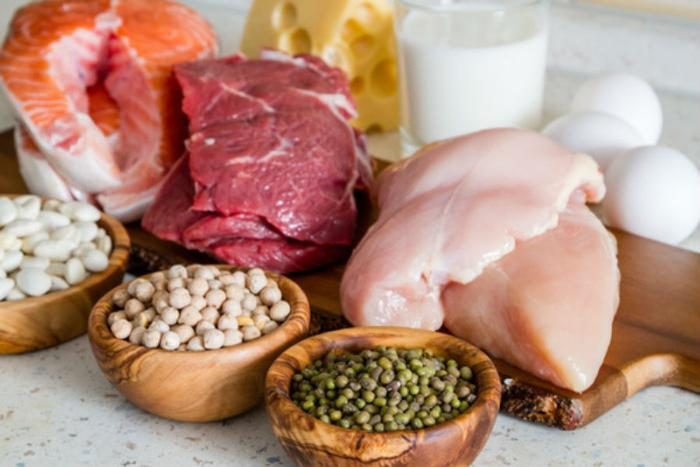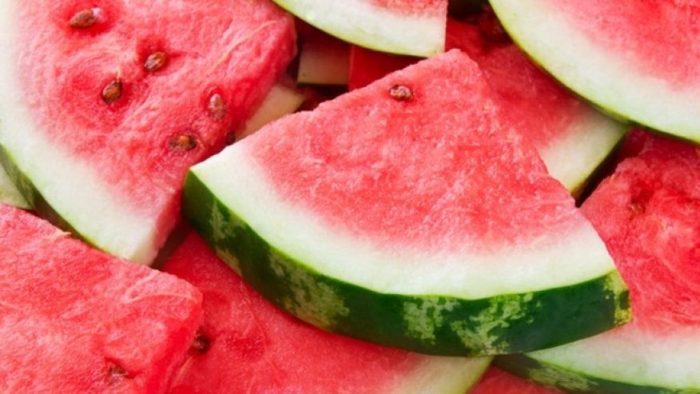Every single tissue and part of the human body contains protein.
Protein — along with amino acids, which make up proteins — are considered the building blocks of life.
Every cell in your body, from your muscles and bones to your skin and hair, contains proteins.
Proteins are made up of amino acids attached to each other in long chains.
Up to 20 different types of amino acids can be combined to make a protein, and the sequence of amino acids determines each protein’s structure and function in your body.
Proteins do many important things in your body, including:
- Provide a source of energy
- Help repair cells and make new ones
- Regulate your body’s tissues and organs
- Promote proper growth and development in children, teenagers, and pregnant women
How Do We Get Protein?
You get protein from the foods you eat. When you eat protein-containing foods, the protein is broken down by your body into amino acids.
Animal sources such as meat, poultry, fish, and eggs are especially rich in protein.
Non-animal products can also provide adequate amounts of protein. Plant sources that may provide substantial amounts of protein include soy products, beans, nuts, and some grains (such as wheat germ and quinoa).
For most people, eating a well-balanced diet will provide enough protein without the need for protein supplements.
The Institute of Medicine recommends that adults get a minimum of 8 grams of protein daily for every 20 pounds of body weight, and says that getting 10 to 35 percent of calories from protein is a healthy range for most people.
Most adults require two to three servings of protein-rich foods each day.
However, this recommendation may vary depending on your age and health and may be particularly different for children and teens.
The following are examples of a serving size of protein-rich foods:
- 2 to 3 ounces of cooked lean meat, poultry, or fish
- 1/2 cup of cooked dried beans
- 1 egg
- 2 tablespoons of peanut butter
- 1 ounce of cheese
Good sources of protein include:
- Turkey
- Chicken without skin
- Bison
- Lean beef
- Lean pork
- Fish or shellfish
- Beans (includes pinto, black, kidney, lentils, split peas, and garbanzo or chickpeas)
- Nuts and seeds (includes almonds, hazelnuts, mixed nuts, peanut butter, peanuts, pecans, sunflower seeds, and walnuts)
- Soy protein products, such as tofu and tempeh
- Low-fat dairy products
It’s important to consider the fat content of protein-rich foods when deciding what to eat. Ideally, you should aim for foods that are high in protein and low in saturated fat.
In fact, more and more research is showing that eating foods like fish, chicken, beans, and nuts in place of red meat can lower your risk of premature death and certain health conditions, including cardiovascular disease, diabetes, and cancer.
Can Too Much Protein Be Unhealthy?
When your body has too much protein, the following can occur:
- Gastrointestinal complications, such as bloating
- Liver complications
- Abdominal pain
- Diarrhea
- Increased risk of gout (buildup of uric acid in the body, leading to joint inflammation)
- Unhealthy drop in blood pressure
- Changes in eating patterns
- Increased workload on kidneys
The amount of protein that you obtain through a well-balanced diet is usually safe.
Still, talk with your doctor if you plan to follow a diet that’s very high in protein or one that includes protein or amino acid supplements.
Protein and Food Allergies
When people have food allergies, it means that their immune system overreacts to at least one type of protein in the food. The following protein-containing foods are responsible for the majority of dietary allergic reactions:
- Cow’s milk
- Eggs
- Fish
- Shellfish
- Tree nuts
- Peanuts
- Soy
- Wheat
Contact your doctor if you think you may have an allergy to any food.


